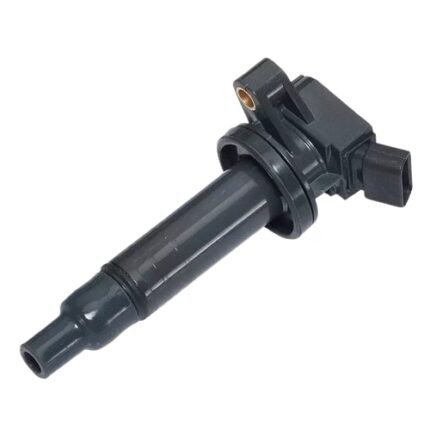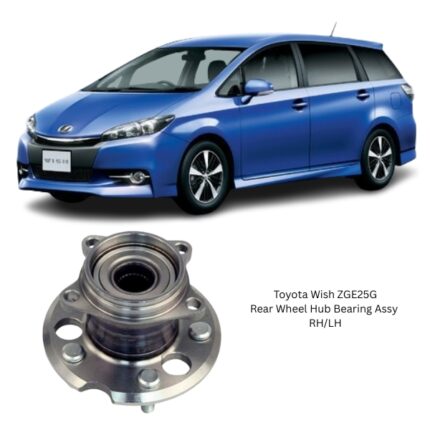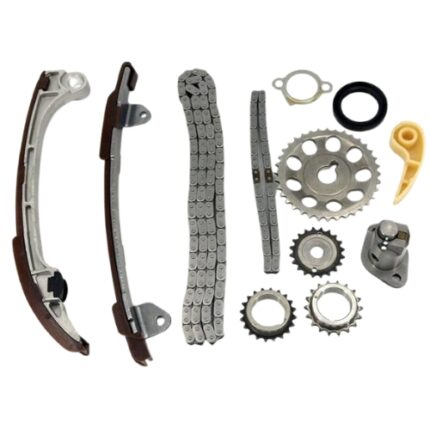-12%
Get Timing Chain Kit without timing gears For 1AZ-FE / 2AZ-FE Engine in Kenya
The Timing Chain Kit (Without Timing Gears) is a precision-engineered component set essential to the performance and durability of internal combustion engines. It is specifically designed to synchronize the movement of the crankshaft and camshaft, allowing intake and exhaust valves to open and close at precise intervals in coordination with the piston’s movement. Unlike complete kits, this version excludes timing gears, focusing on chain-related elements that directly influence timing reliability and engine efficiency.
Timing chains have long been favored over timing belts for their superior strength, resistance to stretching, and longevity under high loads and thermal conditions. This particular kit includes core components that support the timing chain’s operation—typically the timing chain itself, guides, tensioner, and related hardware—while omitting the crankshaft and camshaft sprockets (gears), which may be reused if within serviceable condition.
Core Purpose and Function
The primary purpose of the Timing Chain Kit is to maintain accurate mechanical timing between the engine’s crankshaft and camshaft(s). This ensures that valves operate in perfect harmony with piston strokes, allowing proper air-fuel mixture intake and exhaust gas expulsion.
During engine operation, the crankshaft, driven by the pistons, rotates and drives the timing chain. The chain, in turn, rotates the camshaft(s), which control the opening and closing of the intake and exhaust valves via rocker arms or tappets. The accuracy of this synchronization is crucial; even a small deviation can affect engine performance, fuel efficiency, and emissions, or lead to internal damage.
By excluding the timing gears, this kit is best suited for applications where the sprockets show no significant wear, damage, or misalignment. The included components focus on chain tension, alignment, and smooth operation.
Kit Components
A Timing Chain Kit (Without Gears) typically includes the following:
1. Timing Chain
-
Made from hardened steel, with multiple links designed to resist wear, elongation, and thermal degradation.
-
Typically single- or double-row depending on engine design.
-
Transfers rotational force from the crankshaft to the camshaft with minimal backlash.
2. Timing Chain Tensioner
-
Maintains consistent tension on the chain to prevent slack, noise, and skipped teeth.
-
Comes in hydraulic (oil-pressure actuated) or mechanical (spring-loaded) configurations.
-
Self-adjusting for compensation due to chain wear over time.
3. Timing Chain Guides
-
Made from high-strength plastic or metal with polymer coating.
-
Guide the path of the chain to prevent lateral movement, vibration, and friction against the engine block or head.
-
Positioned on fixed or pivoting mounts.
4. Chain Slipper or Damping Rail
-
A chain slipper (similar to a guide) absorbs vibration and reduces noise.
-
Helps manage chain deflection under dynamic engine loads.
5. Tensioner Arm or Pivot
-
Works in conjunction with the tensioner to apply pressure to the chain.
-
Acts as a lever that balances chain force against the tensioner’s output.
6. Installation Hardware
-
Bolts, pins, or gaskets that secure guides and tensioners to the engine block.
-
Precision-designed to endure torque stresses and vibration.
Operational Characteristics
The components of this timing chain kit work in harmony to deliver:
-
Accurate Timing Synchronization: Prevents timing drift that can lead to valve overlap or misfire.
-
Chain Tension Control: Minimizes slack to reduce chain slap, noise, and the risk of skipping.
-
Durability in High-Load Conditions: Withstands harsh thermal cycling and rapid RPM changes.
-
Low Maintenance Lifecycle: Engineered for long service intervals, often lasting the engine’s life when properly installed and maintained.
Chain Tensioning and Guide Function
One of the most critical aspects of timing chain operation is maintaining proper chain tension. If the chain becomes too loose, it can “jump time,” meaning it shifts a tooth or more from its correct position. This leads to valve timing errors, poor engine performance, and potentially catastrophic piston-to-valve contact.
The tensioner, often hydraulic in modern applications, uses pressurized engine oil to push against a pivot arm or chain guide. This mechanism absorbs chain slack and dynamically adjusts during engine start-up, acceleration, and thermal expansion. Timing chain guides and slippers ensure that the chain remains in a fixed path, minimizing deflection and noise while enhancing durability.
Materials and Manufacturing
Each component in the timing chain kit is made with materials selected for performance and longevity:
-
Timing Chain: Hardened alloy steel, heat-treated to resist elongation and surface fatigue.
-
Guides: Often made from glass-reinforced nylon or composite polymers over steel cores for noise reduction and strength.
-
Tensioners: Precision-machined with hardened pistons and coated surfaces to resist scoring and corrosion.
-
Hardware: Grade 10.9 or higher steel fasteners to ensure high torque retention and vibration resistance.
Common Failure Signs of Worn Chain Systems
Although designed for longevity, timing chains and associated components can deteriorate over time. Typical symptoms include:
-
Rattling noise from the engine front, especially during cold starts
-
Check engine light related to camshaft/crankshaft correlation codes
-
Engine misfires or rough idle
-
Decreased engine power or poor throttle response
-
Metal shavings in the engine oil (indicative of guide wear)
Early diagnosis and replacement using a new timing chain kit can prevent extensive internal engine damage.
Installation Considerations
Proper installation is essential for performance and safety. During installation:
-
Align timing marks on the crankshaft and camshaft sprockets precisely.
-
Pre-load the tensioner according to manufacturer instructions.
-
Replace gaskets, seals, and lubricate components as specified.
-
Verify chain path clearance and check for any contact with surrounding parts.
-
Re-check torque specs and rotate the engine manually before first start.
Since this kit excludes timing gears, installers must ensure that the existing sprockets are within wear tolerance and free of chipped or worn teeth.
Benefits of Using a Chain-Based System
Timing chains offer several technical advantages over belt-driven systems:
-
Longer Lifespan: Typically outlast timing belts by 2–3x, especially under high-stress conditions.
-
Higher Load Capacity: Withstand greater torque and RPM stress without deformation.
-
Reduced Maintenance: No interval-based replacement schedule in most cases.
-
Oil-Lubricated: Operates within the engine and benefits from constant lubrication, reducing wear.
Follow us on Facebook for more parts.





Reviews
Clear filtersThere are no reviews yet.